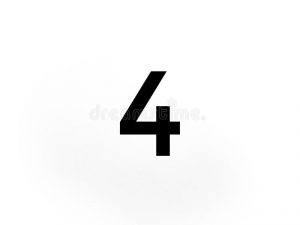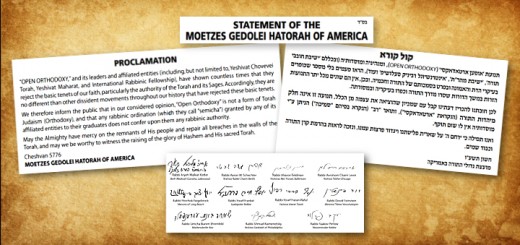The Puzzle of the Fours

Four questions. Four sons. Four expressions of geulah. Four cups of wine. Dam (=44) was placed, in Mitzrayim, on the doorway (deles, “door,” being the technical spelling of the letter daled, whose value is four).
Moving fourward – forgive (fourgive?) me! – Why?
The chachamim who formulated the Haggadah intended it to plant important seeds in the hearts and minds of its readers – especially its younger ones, toward whom the Seder is particularly aimed.
All its “child-friendly” elements are not just to entertain the young people present but more so to subtly plant those seeds. Dayeinu and Chad Gadya and Echad Mi Yodea are not pointless; they are pedagogy.
There are riddles, too, in the Haggadah. Like the Puzzle of the Ubiquitous Fours.
The most basic and urgent concept the Seder experience is meant to impart to young Jews is that Yetzias Mitzrayim forged something vital: our peoplehood. It, in other words, created Klal Yisrael.
Each individual within the multitude of Yaakov Avinu’s descendants in Mitzrayim rose or fell on his or her own merits. And not all of them. Chazal teach us, merited to leave. Those who did, though, were reborn as something new: a people.
And so, at the Seder, we seek to instill in our children the realization that they are not mere individuals but rather parts of a nation unconstrained by geography, linked by history, destiny and Hashem’s love.
Thus, the role we adults play on Pesach night is precise. We are teachers, to be sure, but we are communicating not information but identity. Although the father may conduct the Seder, he is not acting in his normative role as teacher of Torah but rather in something more like a maternal role, as a nurturer of neshamos, an imparter of identity. And thus, in a sense, he is acting in a maternal role.
Because not only are mothers the parents who most effectively mold their children, they are the halachic determinant of Jewish identity. A Jew’s shevet follows the paternal line, but whether one is a member of Klal Yisrael or not depends entirely on maternal status.
The Haggadah may itself contain the solution to the riddle of the fours. It, after all, has its own number-decoder built right in, toward its end, where most books’ resolutions take place. After all the wine, we’re a little hazy once it’s reached, but it’s unmistakably there, in “Echad Mi Yodea” – the Seder-song that provides Jewish number-associations.
“Who knows four?…”



Recent Comments